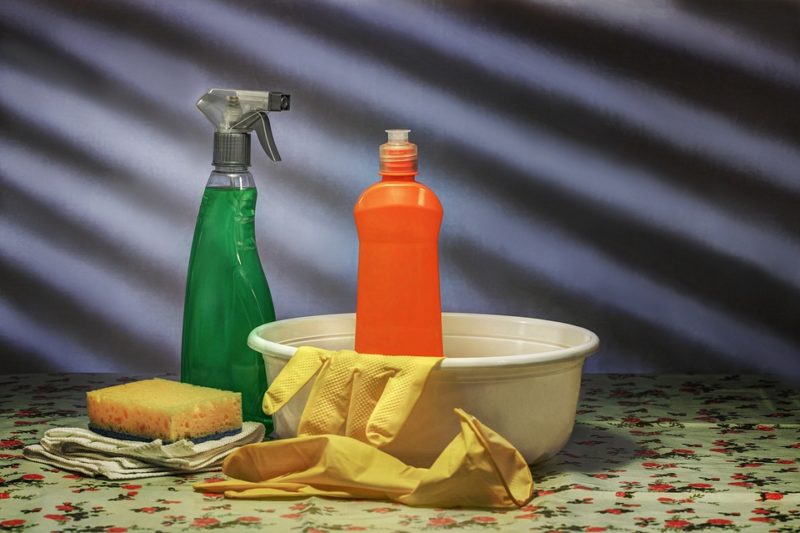Do you want to learn how to clean water heater? Discover the simple and easy steps that will help you understand the whole method and apply the step-by-step. Are you ready? Then, let’s start!
It is essential to clean your water heater every six months. It is ideal for flushing out the sediments and grimes built over time. No one would love to use water that has residues, right? You can remove the sediment by letting it go under and getting the clean water out. But, it would also take time, especially if you have to do it every time. That’ll be a hassle. So, learn how to clean water heater before any grimes or sediments come out. On the other hand, some homeowners tend to clean their water heaters before it reaches six months as they find dirt coming out from the water heaters due to the rapid collection of sediments inside.

Why Is Cleaning Water Heater Important?
An uncleaned water heater affects the performance of the water, especially on the tank-type water heater. As you need to heat your water inside the tank, the lower part plays a huge role in delivering the heat from your fire or heating coils. On the other hand, a cleaned water heater provides safe water, essential in our home. To clean your water heaters safely and accurately, you must learn how to clean water heater at home. Learning how to clean, replace, and assemble our devices or appliances at home will help us gain knowledge on them and prevent us from calling a professional, which needs to pay later on.
Steps To Clean Water Heater
Cleaning your water heater must be made accordingly. It will help you achieve your goal–cleaning and preventing damaging your water heater. You might think that cleaning it is easy and can be quickly done. Yes, you’re right. You can clean your water heater without a professional with you, but just like everyone else, you must know what you’re doing and understand every step to follow it precisely. Now that you’re ready, let’s jump to the steps!
Step #1. Turn off the gas supply
If you use a gas heater, locate the thermostat and turn it off. You can quickly find it by following the gas pipe and has a red button that has a word indicated such as “on,” “pilot,” and “off,” then put it on “off.” Please do not operate if your gas supply is on to ensure your safety. You don’t need to turn on the water heater in the meantime. It will also allow you to indicate any gas leakage on your water heater.
Step #2. Turn to pilot and turn off the water supply
Now that you have turned off the electricity and the gas supply. Turn the main valve in the gas-powered water heater and turn the knob on “pilot.”Locate your water supply for your water heater in electric and gas, then turn it off. Like the electric supply, you need to stop the water from getting into your water heater. It will allow us to flush the grimes or mineral residue built up over time by removing all the water inside.
Step #3. Open the hot faucet, then attach a garden hose
It would help if you turned on the faucet connected to the water heater or pressure-relief valve. It will allow air to go through, and it will help you drain the water. After you have completely turned on the faucets, the next thing you have to do is, connect a hose to the drain valve. The garden hose will be the passageway of the water and sediments. Prepare an empty container and put the other end of the hose inside.
Step #4. Drain the water
After the hoses were put in place, allow the water to go through it and check for any sediments. Some people often see black and thick mineral residue, while others are thinner. After the water is completely drained, repeat the process by turning on your water supply and flushing it again. Repeat as you need. If you think you have removed all the mineral residue, close the drain and remove the garden hose. You may also want to read about components of road drainage system.
Step #5. Finishing up
Close the faucet or pressure-relief valve, turn on the water supply, and fill the tank. Next, switch on the water and the gas supply. Put the knob into “pilot,” then light the pilot with the igniter or the expanded lighter while pushing the red button. Then, release the red button and adjust the water heater temperature according to your desired hotness. Please wait for a few minutes or hours, as this depends on how many waters you’ve filled in the tank until it becomes hot, then turn on the water sinks or faucet.
It’s A Wrap!
Now that you finally learned how to clean water heater , you won’t be in trouble anymore, especially if you notice that some sediments are flushing out. You will be saving a penny every time you clean it yourself. There is no need to pay the service fee to maintain your water heater’s performance. You can do it at home. If so, please handle your water heater with care and impose safety measures. It’s best also to know how to dispose of a water heater and what is Lonox water heater.
